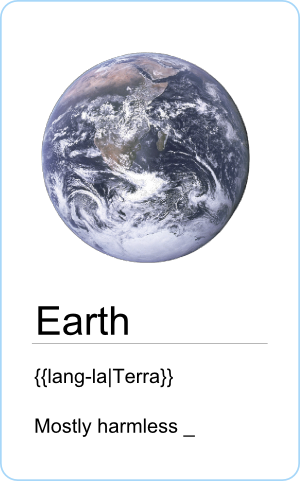It looks like you're using an Ad Blocker.
Please white-list or disable AboveTopSecret.com in your ad-blocking tool.
Thank you.
Some features of ATS will be disabled while you continue to use an ad-blocker.
17
share:
Question: Would alien astronomers equipped with technology similar to our future space and ground based telescopes know the Earth is habitable?
Answer: Yes, if their world is similar to ours and if they were within a sphere of about 1,000 light years.
500 light years may sound like a small amount of space in our Milky Way galaxy which is 100,000 light years across but it is an amount of space containing between 2 and 3 million planetary systems. 22% of which (440,000-660,000) are thought to contain an Earth type planet in their habitable or goldilocks zone.
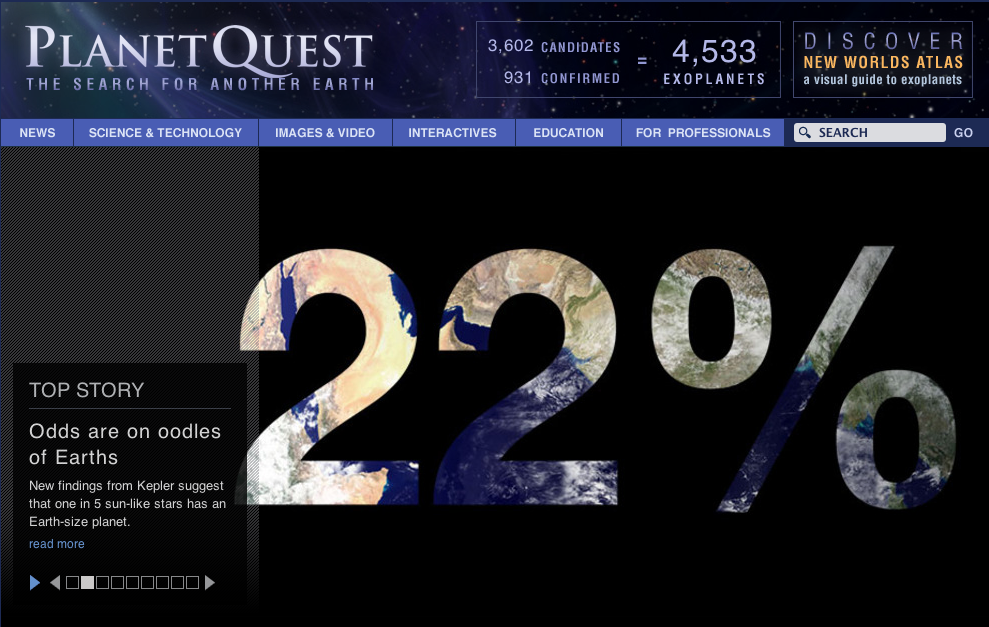
That's a lot of real estate. Quite possibly... we could be in someone elses list of habitable planets:
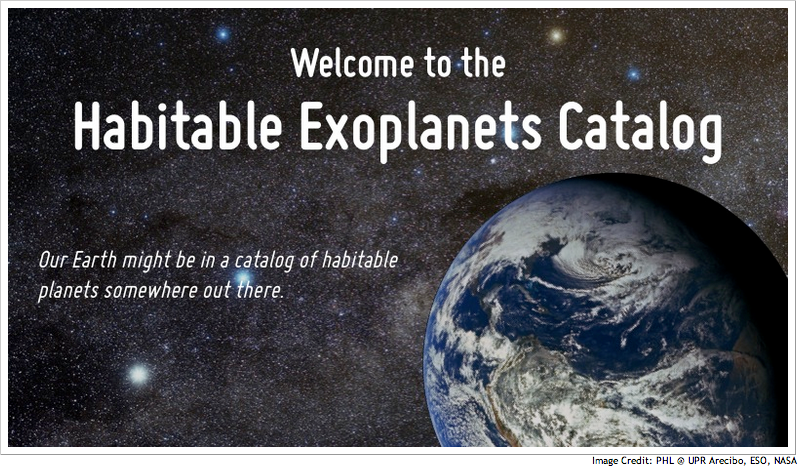
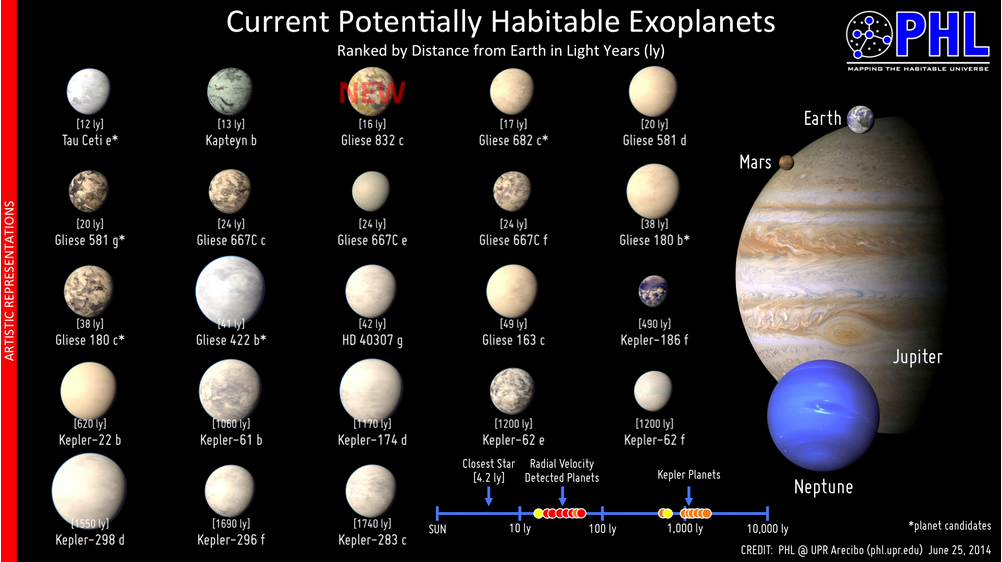
So how would Earth appear to alien scientists?
It's a question which often gets asked on ATS. To that end, there is an article on Astrobiology Magazine's website on research into that question with images taken from the LCROSS (that big lunar probe mission they intentionally crashed into the moon to look for water).
Here's an excerpt:
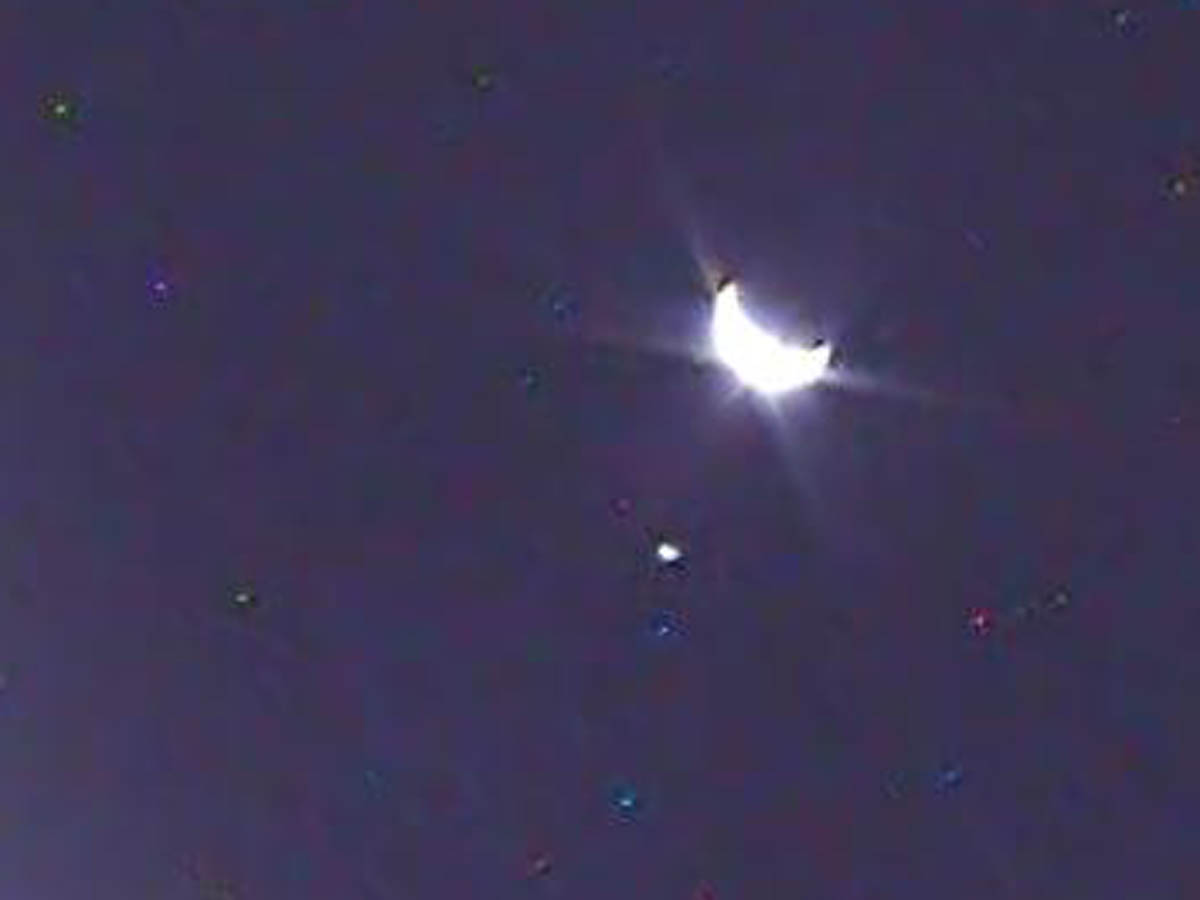
So what would the distant Earth look like to alien astronomers?
Sources: Would Earth Look Like A Habitable Planet From Afar? - Astrobiology Magazine
What else beyond this might alien astronomers be able to do? See my next post.
Answer: Yes, if their world is similar to ours and if they were within a sphere of about 1,000 light years.
500 light years may sound like a small amount of space in our Milky Way galaxy which is 100,000 light years across but it is an amount of space containing between 2 and 3 million planetary systems. 22% of which (440,000-660,000) are thought to contain an Earth type planet in their habitable or goldilocks zone.

That's a lot of real estate. Quite possibly... we could be in someone elses list of habitable planets:


So how would Earth appear to alien scientists?
It's a question which often gets asked on ATS. To that end, there is an article on Astrobiology Magazine's website on research into that question with images taken from the LCROSS (that big lunar probe mission they intentionally crashed into the moon to look for water).
Here's an excerpt:
Even when a distant world has the trademarks of habitability — it’s Earth-sized, it’s in the zone around its star where liquid water is possible — finding signs of life is tricky. The telescope technology of today falls short of being able to distinguish clues of life.
But readying the tools to find life now will help astronomers when telescopes get better in the next few decades. Sometimes, this requires looking at a planet that we already know has life — that would be Earth, the only confirmed one so far — and pretending that we are looking at it as a visiting extraterrestrial.
When viewing Earth from space, how could you tell that this planet is well-suited for life? Are there telltale signatures in the atmosphere or from our oceans? These are some of the questions that controllers of a lunar spacecraft sought to answer when it took a bit of a side mission. Instead of observing the Moon, NASA’s Lunar Crater Observation and Sensing Satellite (LCROSS) briefly looked at Earth.
“The LCROSS spacecraft observed the Earth and made statements about ozone in Earth’s atmosphere and also liquid water,” said lead researcher Tyler Robinson, a postdoctoral researcher at the NASA Ames Research Center in Mountain View, Calif. “We also used it to validate a tool to simulate how a distant Earth would appear.”

When LCROSS crashed into the moon itself, observations with NASA’s Lunar Reconnaissance Orbiter and others revealed about 100 kilograms of water in the crater it punched in the regolith, which was about 20 meters (66 feet) across.
The spacecraft was indeed successful in finding (and helping other spacecraft find) water on the Moon. But could it also find water on our ocean-rich Earth at a distance? Scientists became curious about the prospect, especially after seeing that our oceans make a mirror-like reflection, called “glint,” when a distant Earth appears as a crescent from the perspective of the Moon.
LCROSS did three observation sessions of Earth in 2009. Interestingly, the spacecraft was not originally tasked to look at Earth as an exoplanet. Instead, scientists were evaluating how accurately the spacecraft was pointing after launch, said co-author and NASA astrophysicist Kimberly Ennico-Smith. The data was later repurposed for the exoplanet modeling used in this research.
“You never know what else another pair of eyes looking at data can bring you,” she wrote in an e-mail. “That’s why having and maintaining archives is so important.”
For example, finding hydroxyl — a type of water — on the Moon came from combining sets from India’s Chandryaan-1 lunar spacecraft, and NASA’s Cassini spacecraft on its way to Saturn. Both missions were using the Moon to calibrate their instruments; ocean examinations were not the main objective.
So what would the distant Earth look like to alien astronomers?
Seeing a glint
Looking at the repurposed data yielded a surprise. Not only did LCROSS see a glint, but it was a lot different than what researchers expected.
The glint detection I found to be surprising for a couple of reasons,” Robinson said. “The spacecraft observation of glint was in disagreement with some previous observations that were done from the ground.”
Specifically, some researchers had tried to make predictions of the Earth’s glint based on gazing at the Moon. When looking at the Moon outside of full phase, it’s possible to see the Earth’s light shining faintly off of it in a phenomenon called “Earthshine.”
By comparing Earthshine data from a crescent-phase Earth with data from other phases, it’s possible to get measurements of how significant glint is in observations of Earth’s crescent sliver. These measurements predicted a much stronger glint than what Robinson’s team saw using the LCROSS data.
What also surprised researchers was how different the glint appeared in different wavelengths of light. At some wavelengths, glint dominated Earth’s appearance, while at other wavelengths, the glint effect was more muted, as it was masked by certain atmospheric phenomenon.
“Also, the Earth at crescent phase, thanks to the ocean, can be twice as bright. If it’s something you look for in exoplanets, it can be a significant effect,” added Robinson.
Designing future telescopes
If over the course of several orbits, a planet is observed as more reflective at crescent phases and less reflective at other phases, then can it be assumed that ocean glint is the cause? Robinson cautions that the answer is not that simple.
“There could be other explanations,” he said. “Clouds have a tendency to reflect better at crescent phases than at other phases, and recent work has shown that, under some circumstances, the ice-covered polar regions can mimic certain glint effects.”
But there could be other indications of habitability and life as well. One thing they noticed from a distance was ozone, which was not as much of a surprise to scientists but still a useful tool for observations. Ozone especially showed up in ultraviolet light, and it could be a “bio-indicator,” or sign of life, on distant planets, Robinson said.
“Ozone is a key potential indicator of life, and it appears most strongly in ultraviolet observations of Earth,” he said. “So, future telescopes could look to the ultraviolet as a place to more easily detect biosignature gases.”
Another important aspect of the observations performed by LCROSS is that they become the basis for new telescope designs. NASA’s work allows researchers to gather data on which designs would best pick out certain features of planets, such as the reflectivity or ozone that LCROSS observed.
“It’s using current tools to predict and understand what future telescopes might one day see. By studying Earth now, you can ensure that we don’t accidentally engineer the telescope of the future and find out we didn’t build it strong enough,” Robinson said.
Sources: Would Earth Look Like A Habitable Planet From Afar? - Astrobiology Magazine
What else beyond this might alien astronomers be able to do? See my next post.
edit on 2-7-2014 by JadeStar because: (no reason given)
Thank you for making this thread. I have wondered about this for a long time.
Continuing...
PART 2.
Before the research referred to in my original post in this thread NASA did another mission called EPOXI which itself was a mission which repurposed what would otherwise have been a useless space craft called Deep Impact after its primary mission was over.
EPOXI looked back at the Earth as if it were an Exoplanet imaged in a large alien telescope or array of space telescopes at high resolution and this time lapse video was recorded:
And here is what was found:
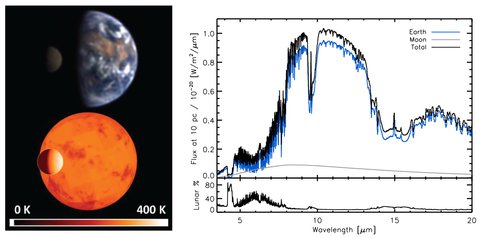
So what they found is that it is possible to learn quite a lot about our Earth ie: that it has oceans, ice, clouds, even and possibly vegetation. They also could spot the moon and differentiate it from the Earth spectrally.
Source: Earth as an Exoplanet - EARTH MODEL VALIDATION USING EPOXI EARTH OBSERVATIONS - University of Washington - Virtual Planet Laboratory
For more on the EPOXI Mission there is an excellent plain english, non-technical interview with mission scientists here.
So when will we be able to do what our alien counterparts may have already done hundreds or thousands of years ago?
Answer: In about 10-30 years. Right now a number of large ground based telescopes are being constructed. Most recently construction began on the largest telescope in the world, the European Extremely Large Telescope, which broke ground, with a BANG!.
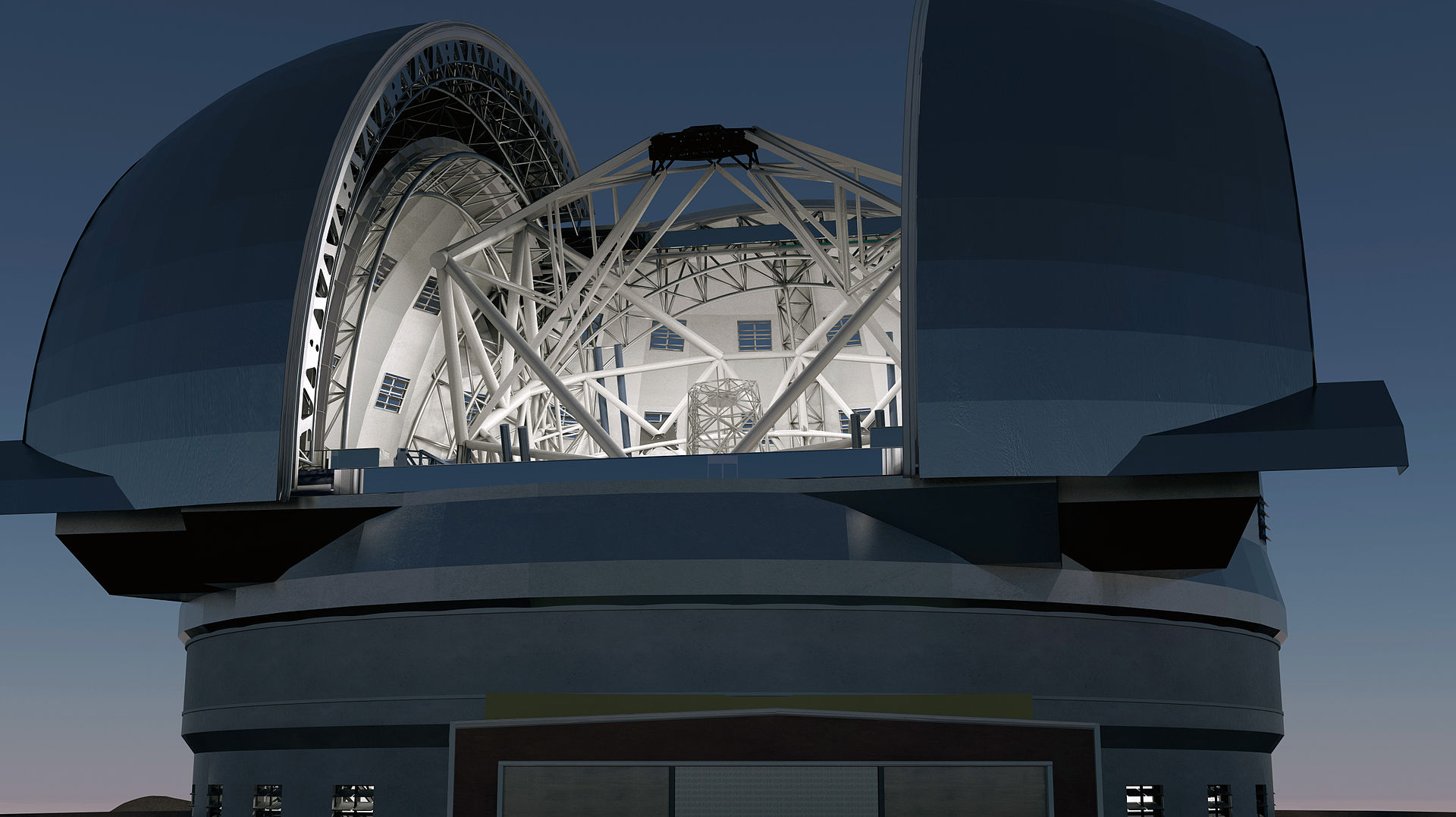
Compared to the Very Large Telescopes and the Great Pyramid:
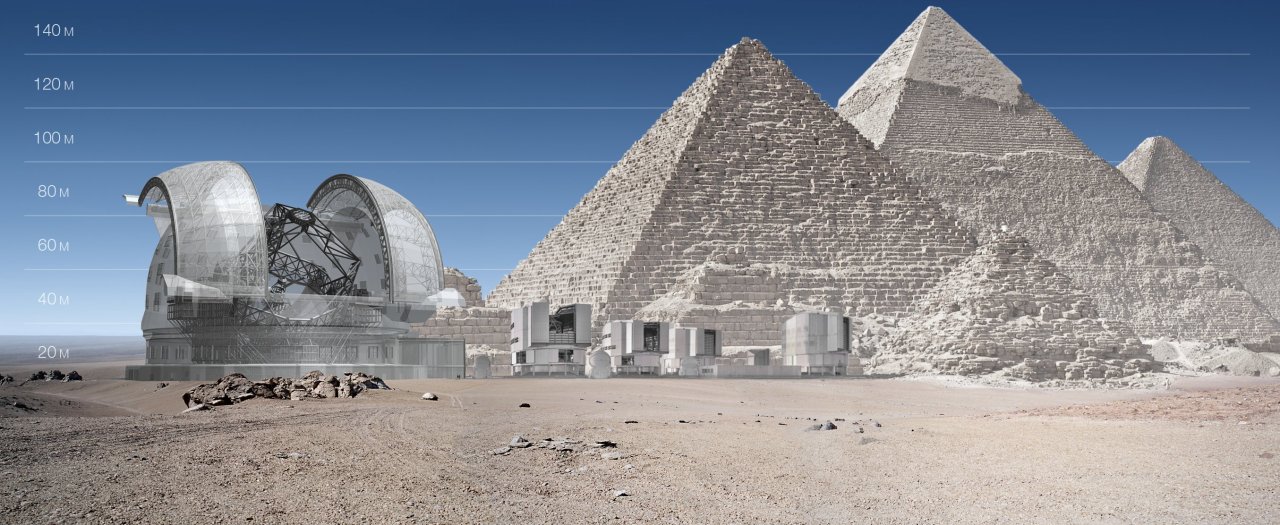
The European Extremely Large Telescope (E-ELT) may be powerful enough to detect atmospheres of nearby exoEarths:
Not to be outdone, the Thirty Meter Telescope in the USA will also be a formidable tool in the search for tell tale signs of life around stars closest to our solar system.
Source: New Technique Finds Water in Exoplanet Atmospheres - Universe Today
Also...
AUDIO: Future of Exoplanet Detection
And of course the James Webb Space Telescope has among its science goals the following....
New Biomarkers Honed to Help Search for Life on Earth-like Exoplanets - Scientific American
So, in summary, sometime in the next decade or so, we will begin to have the same powers of detection and discernment of other life in our neighborhood which our fictional alien astronomers may have and have had for quite some time.
PART 2.
Before the research referred to in my original post in this thread NASA did another mission called EPOXI which itself was a mission which repurposed what would otherwise have been a useless space craft called Deep Impact after its primary mission was over.
EPOXI looked back at the Earth as if it were an Exoplanet imaged in a large alien telescope or array of space telescopes at high resolution and this time lapse video was recorded:
And here is what was found:

The model has been extensively validated from the ultraviolet to the thermal infrared, and is in excellent agreement with data from NASA’s Atmospheric Infrared Sounder (Aqua/AIRS), and temporally- and spectrally-resolved observations of Earth from NASA’s Deep Impact flyby spacecraft (a VPL collaboration with the NASA EPOXI mission) (Robinson et al., 2011). The model has also been validated as a function of phase using Earthshine and EPOXI data (Robinson et al., 2010).
Products from the Earth model can be used to explore the detectability of signs of habitability and life for the Earth, to validate the retrieval techniques developed in Task E, and to expand our 3-D spectral visualization capability to planets other than the Earth. We are currently working on upgrades to the Earth model that will further increase its versatility.
Highlights of scientific applications of the VPL 3-D Spectral Earth model are described below.
Detecting Alien Oceans Using Glint
In Robinson et al. (2010), we used the Earth model to simulate Earth's appearance in reflected light over a year, including the realistic evolution of cloud, snow, and sea ice cover. We used this VPL-generated dataset (which is publicly available on this website) to investigate the detectability of "glint", the mirror-like reflection of sunlight off a body of water, in the Earth’s disk-integrated brightness. Including the possibly confusing effects of realistic forward scattering clouds, our models of the Earth's phase-dependent brightness show that the crescent-phase Earth is as much as 100% brighter than an identical non-glinting Earth at some near-infrared wavelengths. Such an excess in brightness may be detectable by NASA's James Webb Space Telescope if it were to fly with an external occulter.
Detecting Exomoons
The VPL 3-D Spectral Earth model has also been used to explore the detectability of a moon around an Earth-like exoplanet as a function of wavelength and observed phase (i.e. whether the exoEarth and moon are observed at full, or near crescent phase) (Robinson, 2011). The models showed that the contribution of the exomoon to the exoEarth spectrum is very strongly phase dependent, and more likely to be detectable in the exoEarth’s carbon dioxide absorption bands.
So what they found is that it is possible to learn quite a lot about our Earth ie: that it has oceans, ice, clouds, even and possibly vegetation. They also could spot the moon and differentiate it from the Earth spectrally.
Source: Earth as an Exoplanet - EARTH MODEL VALIDATION USING EPOXI EARTH OBSERVATIONS - University of Washington - Virtual Planet Laboratory
For more on the EPOXI Mission there is an excellent plain english, non-technical interview with mission scientists here.
So when will we be able to do what our alien counterparts may have already done hundreds or thousands of years ago?
Answer: In about 10-30 years. Right now a number of large ground based telescopes are being constructed. Most recently construction began on the largest telescope in the world, the European Extremely Large Telescope, which broke ground, with a BANG!.

Compared to the Very Large Telescopes and the Great Pyramid:

The European Extremely Large Telescope (E-ELT) may be powerful enough to detect atmospheres of nearby exoEarths:
Science Goals
The E-ELT will search for extrasolar planets — planets orbiting other stars. This will include not only the discovery of planets down to Earth-like masses through indirect measurements of the wobbling motion of stars perturbed by the planets that orbit them, but also the direct imaging of larger planets and possibly even the characterisation of their atmospheres. The telescope will attempt to image Earthlike exoplanets, which may be possible.
Not to be outdone, the Thirty Meter Telescope in the USA will also be a formidable tool in the search for tell tale signs of life around stars closest to our solar system.
“While the current state of the technique cannot detect earthlike planets around stars like the Sun, with Keck it should soon be possible to study the atmospheres of the so-called ‘super-Earth’ planets being discovered around nearby low-mass stars, many of which do not transit,” said Caltech professor of cosmochemistry and planetary sciences Geoffrey Blake. “Future telescopes such as the James Webb Space Telescope and the Thirty Meter Telescope (TMT) will enable us to examine much cooler planets that are more distant from their host stars and where liquid water is more likely to exist.”
Source: New Technique Finds Water in Exoplanet Atmospheres - Universe Today
Also...
AUDIO: Future of Exoplanet Detection
And of course the James Webb Space Telescope has among its science goals the following....
.....the James Webb Space Telescope, now scheduled for launch in 2018, has a chance of examining the atmospheres of a handful of these bodies. So might a new generation of extremely large ground-based telescopes, with mirrors of 30 meters or more, that have recently been proposed.
Some of the exoplanets these telescopes will attempt to study have a rare alignment. Like the more distant exoplanets identified by Kepler, they regularly pass in front of, or transit, their parent stars as seen by the detectors. During a transit, starlight filters through an exoplanet's atmosphere, with each chemical constituent leaving its own imprint on the light. The signal is extremely faint but planets in the habitable zone of M stars make frequent transits, enabling astronomers to accumulate individual observations to make a stronger detection. "The habitable zone of M stars are the first places that we can look for bio-signatures," Seager says.
New Biomarkers Honed to Help Search for Life on Earth-like Exoplanets - Scientific American
So, in summary, sometime in the next decade or so, we will begin to have the same powers of detection and discernment of other life in our neighborhood which our fictional alien astronomers may have and have had for quite some time.
edit on 2-7-2014 by JadeStar because: (no reason
given)
A comparison of the sizes of the primary mirrors of current and future telescopes:
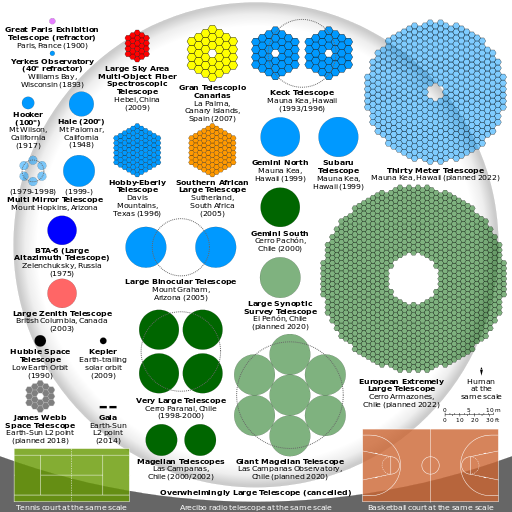

a reply to: JadeStar
It is wrong to think how civilization of which way of thinking, development, technology you don't know, would react, discover and look for planets. First thing, they would find a proper way to travel,
I am seeing a pattern of technology development from using antigravity - using the magnetosphere and such means of flying. The whole technology that exists in public today is ridiculously primitive to achieve anything of that kind.
Also there may be some shortcuts in space that humanity hasn't discovered and such to be used to shorten distances - a real scientist would be open minded for such undiscovered things existing in space like many other.
It is wrong to think how civilization of which way of thinking, development, technology you don't know, would react, discover and look for planets. First thing, they would find a proper way to travel,
I am seeing a pattern of technology development from using antigravity - using the magnetosphere and such means of flying. The whole technology that exists in public today is ridiculously primitive to achieve anything of that kind.
Also there may be some shortcuts in space that humanity hasn't discovered and such to be used to shorten distances - a real scientist would be open minded for such undiscovered things existing in space like many other.
originally posted by: LightYearsAhead
a reply to: JadeStar
It is wrong to think how civilization of which way of thinking, development, technology you don't know, would react, discover and look for planets. First thing, they would find a proper way to travel,
I am seeing a pattern of technology development from using antigravity - using the magnetosphere and such means of flying. The whole technology that exists in public today is ridiculously primitive to achieve anything of that kind.
Also there may be some shortcuts in space that humanity hasn't discovered and such to be used to shorten distances - a real scientist would be open minded for such undiscovered things existing in space like many other.
Before anyone would go anywhere it is logical to assume they'd want a map of where to go don't you think? It's hard to imagine beings so intelligent they'd create the types of sci-fi type vehicles you imagine but send them off into the Galaxy without having any idea whether the place they were going was interesting.
Even aliens need a roadmap.
edit on 2-7-2014 by JadeStar because: (no reason given)
Thanks for another fascinating thread JS (away from the World Cup ) . You have a good grasp of how to explain this all to someone who has no formal
qualifications in this sort of thing. Duly S&F.
originally posted by: mirageman
Thanks for another fascinating thread JS (away from the World Cup ) . You have a good grasp of how to explain this all to someone who has no formal qualifications in this sort of thing. Duly S&F.
Thank you. That's why I'm here. Lots of interesting stuff going on is often buried in technical journals or put across in a way the average person doesn't understand. So I try to bridge those worlds. (no pun)
This is an interesting question. Glad I signed up today. Thanks for the great forum.
Simply an amazing thread. It's the type of thing science geeks dream about.
a present for everybody:
www.planetary.org...
this is about alpha cent a b and proxima. look for exciting science beginning after 2015. if there is a earth sized planet in the habitable zone these teams will find it.
www.planetary.org...
this is about alpha cent a b and proxima. look for exciting science beginning after 2015. if there is a earth sized planet in the habitable zone these teams will find it.
Both the Geneva team and my team will use the next few years to develop innovative instruments with the goal of reaching 10 centimeter-per-second precision – a factor of ten gain over current precision. The Geneva team is designing a high-resolution instrument, ESPRESSO, for the 8-meter telescopes at Paranal in Chile. My team is designing EXPRES for the Discovery Channel Telescope. As the acronyms imply, we are both aiming for the extreme precision needed to robustly detect Earth-mass planets orbiting at habitable-zone distances.
new topics
-
Former ‘GMA Producer’ Sues NPR-Legacy Media Exposed
Propaganda Mill: 1 hours ago -
New Footage - Randy Rhoads 1979 LIVE Guitar Solo Footage at the Whisky - Pro Shot
Music: 1 hours ago -
Happy Hanukkah…
General Chit Chat: 1 hours ago -
A Merry Christmas.
General Chit Chat: 9 hours ago
top topics
-
Cold Blooded Killers on Christmas!! GRRRRrrr!!
Pets: 16 hours ago, 10 flags -
A Merry Christmas.
General Chit Chat: 9 hours ago, 6 flags -
Former ‘GMA Producer’ Sues NPR-Legacy Media Exposed
Propaganda Mill: 1 hours ago, 6 flags -
Happy Hanukkah…
General Chit Chat: 1 hours ago, 3 flags -
New Footage - Randy Rhoads 1979 LIVE Guitar Solo Footage at the Whisky - Pro Shot
Music: 1 hours ago, 2 flags
active topics
-
Happy Hanukkah…
General Chit Chat • 2 • : chiefsmom -
Orange County Makes Shoplifting a Felony
Other Current Events • 25 • : CosmicFocus -
Plane Crash Today --Azerbaijanian E190 passenger jet
Mainstream News • 31 • : Springbok -
Former ‘GMA Producer’ Sues NPR-Legacy Media Exposed
Propaganda Mill • 2 • : MuddyPaws2 -
It's Offical Now
US Political Madness • 24 • : Lazy88 -
Dutch Investigators Give Results of MH17 Probe to Families
Breaking Alternative News • 294 • : Lazy88 -
New Footage - Randy Rhoads 1979 LIVE Guitar Solo Footage at the Whisky - Pro Shot
Music • 0 • : gortex -
Post A Funny (T&C Friendly) Pic Part IV: The LOL awakens!
General Chit Chat • 7958 • : underpass61 -
London Christmas Market BANS Word ‘Christmas’
Social Issues and Civil Unrest • 54 • : BernnieJGato -
Statements of Intent from Incoming Trump Administration Members - 2025 to 2029.
2024 Elections • 55 • : Xtrozero
17

